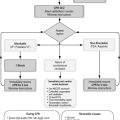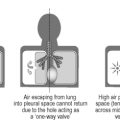Chapter 34. The paediatric history
A paediatric history is made up of two elements:
• The account of what has happened
• Background information about the child which might affect the current or future situation.
The AMPLE format
If there is very little time to take a full history then the mnemonic AMPLE should be the basis of a very brief history:
A – Allergies
M – Medicines
P – Past medical history
L – Last food and drink
E – Events leading up to the current problem
Allergies
It is especially important to know about allergies if any drugs may be given. Occasionally, an allergic reaction to medicines or foods is the cause of the illness.
Medicines
The list of regular medication gives much information about known medical problems and the current state of health.
Past medical history
The medical history has a major bearing on the current problem. At this stage, just a list of important past illnesses is required. Even in young children, the past history can be surprisingly complicated.
Last food and drink
The presence of food and drink in the stomach is a major risk factor for regurgitation. This may lead to airway and breathing problems. To be forewarned is to be in a position to take action if necessary.
Events leading up to the current problem
Brief details of the course of an illness or the mechanism of an injury together with the nature of the present complaints are extremely helpful.
The story from the scene
At a child’s home, the normal living environment reveals much about the child’s daily life. The family’s social circumstances and habits may give useful clues as to the current problems. The apparent health and wellbeing of the other children in the household are also important.
The carer’s tale
Children are unique in often having someone in close proximity who is looking after them. This person, who is usually a parent but may be a relative, friend or teacher, can usually give a good account of what has happened.
What the bystander saw
People at the scene of an incident often give valuable information. Such people may include passers-by, neighbours or professionals such as police officers and fire-fighters. After the incident, all these people disperse and this part of the history may be lost for ever.
The child’s own account
Children often respond very well to appropriate questions. Their account of events can be extremely accurate. It should not be assumed that an adult’s story of events is any more credible than an older child’s.
The full medical history
The full history can be structured as follows:
• Presenting complaint and history of presenting complaint – why have they called an ambulance?
• Past medical history – past illnesses and operations
• Social history – the environment and the people that the child lives with
• Family history – medical problems of other family members
• Medications – the child’s current and past medication and known allergies
• Review of systems – a checklist of the different body systems involving inquiry into possible problems with each.
Never delay urgent treatment to collect unnecessary data
Relevant immediate questions
The depth of enquiry should vary with the immediacy of the situation and the questioning should be directed to the most appropriate person, be that the carer or the patient.
Breathing problems, fits, pain, injury and general symptoms of infection are responsible for the majority of paediatric emergencies. A systemic consideration of some useful urgent questions is helpful. These questions make up the E (events) and some of the P (past medical history) of AMPLE. The following lists are not exhaustive, but can be used as a guideline for questioning:
A – Airway
B – Breathing
C – Circulation
D – Disability
E – Environment
F – Fits
G – Glucose
I – Immediate needs.
Airway
Diagnosis of the problem
• When did the problem start?
• Is there reason to suspect an inhaled foreign body?
Severity of the problem
• Has the child been distressed?
• Has the child been drooling?
• Can the child eat and drink?
Breathing
Diagnosis of the problem
• When did it start?
• Has it ever happened before?
Severity of the problem
• Has the child been responding normally?
• Has the child been distressed?
• Has the child ever needed steroids?
• Has the child ever been admitted to hospital with breathing problems before?
• If admitted, has the child ever been on an intensive care unit?
Circulation
Diagnosis of the problem
• When did it start?
• Has the child any heart problems?
• Does the child have a rash? Meningococcal septicaemia causes purpura (bruises)
• Has the child had any diarrhoea or vomiting?
Severity of the problem
• Has the child been responding normally?
Disability
• When did it start?
• Has the child been responding normally?
• Does the child have a rash?
• Has the mother (or other carer) noticed any agitation or an odd cry or affect?
Environment
• In what position is the child most comfortable?
• Is the child too hot or too cold?
Fits
Diagnosis of the problem
• Has the child ever had fits before?
• Has the child been generally unwell in any way before the fit?
• Has the child had a raised temperature?
• Have the child’s eyes rolled up at the time of the attack? (Mothers often notice this)
• Was the child playing when he or she went limp and collapsed? Febrile convulsions often occur with minimal tonic/clonic activity.
Severity of the problem
How long did the fit last?
Glucose
Diagnosis of the problem
• Does the child have diabetes?
• Has the child had his or her normal insulin dose?
• Has the child been eating and drinking normally?
Young children have limited stores of glucose. Always check blood sugar in seriously ill children and correct if evidence exists of hypoglycaemia, regardless of whether or not the child is diabetic.
Hypoglycaemia in any child is a life-threatening emergency
Severity of the problem
Has the child been behaving and responding normally?
Immediate needs
• Where does it hurt?
• How bad is it?
Further background questions
In the situation of immediate care, extensive consideration of the child’s background is often irrelevant and may be counterproductive.
Maternal health and pregnancy
The health of the mother may affect the development of the fetus and health of the newborn.
Birth problems
A difficult birth (caesarean section or forceps delivery) may later manifest itself as developmental problems or fits. Did the baby spend time on the special care baby unit (SCBU)?
Development
The continuing rapid development of a child distinguishes it from the adult. Questions should be asked about relationships, behaviour, play, school, sports and activities.
Immunizations
Children in the UK benefit from a planned programme of immunisations. The immunisations received by the child should be ascertained.
Siblings
The health of brothers and sisters may give useful information concerning a child’s illness.
Exploration of the current problem
It is important to listen to the story told by the child or the carer. Direct questions will involve expanding on the AMPLE format and the systematic A–I approach above. The particular complaints that are common in children may also involve:
• Raised temperature or shivering
• Lethargy or drowsiness
• Headache and neck stiffness
• Aches and pains
• Cough, cold, sore throat and earache
• Feeding problems
• Diarrhoea and vomiting
• Reduced or increased urine output (are there normal wet nappies in a small child?)
• Difficulty sleeping.
Sometimes the worries of the parents and other carers predominate over the symptoms of the child and these problems must also be explored.
Early suspicions of child abuse
Several different types of child abuse are now recognised.
• Physical abuse (non-accidental injury)
• Emotional abuse
• Neglect
• Sexual abuse
• Organised or ritual abuse.
There are patterns of physical signs for some types of abuse, but the history and the context in which the events occurred are the most important first indicators to alert the health worker. The following features of a history of injury might point to abuse:
• Inappropriate delay in seeking help and advice after a significant injury
• Previous history of frequent accidents
• The history of the accident is not a likely mechanism for that injury
• Vague or absent history of an accident
• Different carers give different explanations for the same injury
• The child gives a different history
• The injury is supposed to have been sustained in a way that is inconsistent with the child’s development, e.g. a fall before the child has started walking
• The adults with the child are either unconcerned or hostile during questioning.
Suspicions of child abuse, in whatever form, should not be voiced in the prehospital environment. Such concerns should be brought to the attention of a senior doctor after arrival in hospital. It is also the individual responsibility of paramedics to ensure any concerns are reported to the relevant social services department. All ambulance trusts should have a child welfare policy in place that details the correct procedure.
How to hand over the history to the hospital
Good communication is vital at the point where the care of the patient is transferred from the prehospital workers to the hospital. It should include both handing over the written records of the history and some direct discussion. What happened after the ambulance arrived and during the journey to the hospital is now part of the history.
For further information, see Ch. 34 in Emergency Care: A Textbook for Paramedics.





